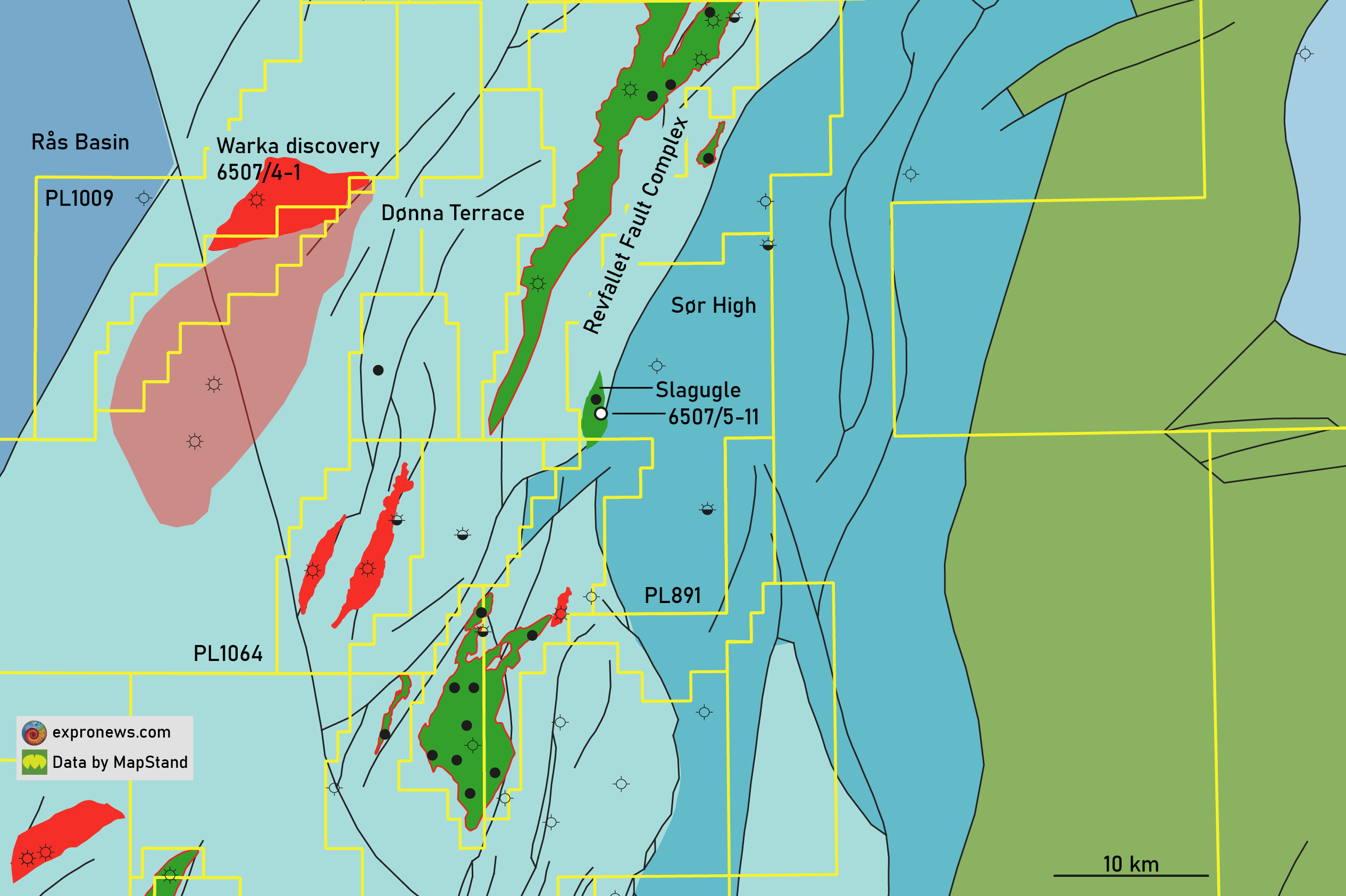Slagugle, with an upside of around 200 MMBoe, was certainly the biggest discovery of 2020 and for that reason the operator was awarded “Explorer of the Year”. And in contrast to most current drilling activity in the Norwegian Sea, well 6507/5-10S targeted a Jurassic reservoir.
However, it wasn’t the classic Middle Jurassic sandstones of the Garn, Ile and Tofte formations that were proven to be oil-bearing. It was the underlying Åre Formation where a 270 m gross oil column was found with a total of 90 m of sandstone with good reservoir properties.
The seismic section below nicely illustrates the structural setting of Slagugle within the so-called Revfallet Fault Complex, a NNE-SSW trending structural element. Slagugle sits significantly shallower than ConocoPhillips’ other recent Norwegian Sea discovery Warka, which is in Cretaceous Lange Formation sandstones.

Hear more about the Warka discovery at the upcoming NCS Exploration – Recent Discoveries Conference taking place 8 & 9 June in Oslo.
Following completion of the 6707/5-11 well on Slagugle, ConocoPhillips will remain active in the Norwegian Sea, with two exciting exploration planned. The company will drill the Bounty exploration well on the Frøya High in PL935. A courageous attempt, given that both the Fat Canyon and Melstein prospects drilled by PGNiG and Lundin respectively turned out dry.
In addition, the company is also planning to drill the Peder prospect in PL1064 (see map above), which may be an attempt to further prove the Cretaceous play near Warka.
All in all, 2022 promises to be an important year for ConocoPhillips in the Norwegian Sea.
HENK KOMBRINK





